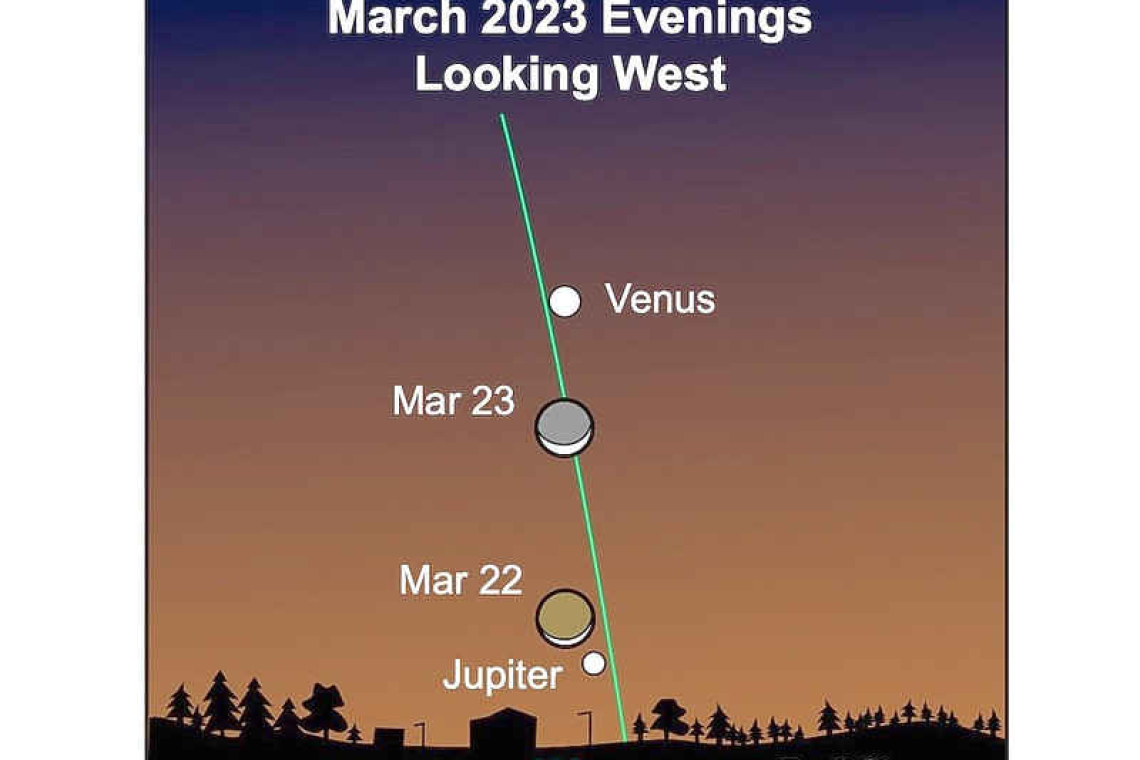~ St. Maarten’s Backyard Astronomy for March 17-19 ~
Sun rises at 6:18am
Sun sets at 6:22pm
Lunar phase: Waning Crescent, approaching New Moon
Moon rises at 4:02am
Moon sets at 3:25pm
This weekend, we prepare for the Spring Equinox, occurring this year on Monday, March 20. This is the day when the earth is at the halfway mark in its orbit around the sun. The only reason this point in the year is significant is the tilt of the earth, relative to the plane of the earth’s orbit. The tilt of the earth is the reason days are longer in the summer and shorter in the winter, but on the equinox date (both the spring and the fall), the daylight hours are equal to the dark hours of the night.
Another phenomenon noted on the equinox is that the sun rises exactly in the east and sets exactly in the west. This is the case no matter where you are on Earth, unless you are standing exactly at the North or South Pole. Also, the sun appears directly overhead at twelve noon, if you are at the equator.
If you are observant, you may notice the location of the path of the sun across the sky each day. You should see that day by day, week by week, it’s shifting toward the north at this time of year. This increased sunlight means nature is waking up from winter and getting ready for plants to grow again. Trees may start budding, and flowers begin to bloom. Also responding to the change in daylight, migratory birds and some butterflies begin to fly back towards their summer feeding grounds in the north. They are following along with the path of the sun. The longer days bring with them warmer weather. People begin to leave their winter coats at home, and some may opt to enjoy vacations closer to home rather than travel to our fair shores.
Of course, in the Southern Hemisphere, they are experiencing the end of summer and their days are getting shorter and their nights are getting longer. In the Southern half of the planet, plants and animals are getting ready for winter’s dark cold days and nights.
Meanwhile, you can still see the two bright planets in the western sky after sunset. Jupiter and Venus continue to grab the glory, but Jupiter is less bright and sets early, by 7:45pm. After that, you would only see Venus, also known as “the evening star” and this planet will set by 8:35pm. Look also for Mars in the high western sky, amid the stars of the Winter Circle, specifically the Red Planet between Orion the Hunter and Taurus the Bull.
Thank you for keeping up with the Night Sky articles, backyard astronomy designed for St. Maarten sky viewing. FYI: If you are out later on in the week, note that each star rises about four minutes earlier each day than written here, and the moon rises 50 minutes later. Night Sky is researched and compiled by Lisa Davis-Burnett. Earthsky.org is a key resource for information and images. Questions or comments? Email This email address is being protected from spambots. You need JavaScript enabled to view it.







